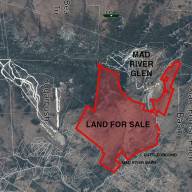As part of Waitsfield’s work to plan and develop a municipal wastewater system, the town’s wastewater planning committee has been exploring alternatives for how the waste, liquids, and solids, will be collected, and disposed of.
While some municipal wastewater systems pump wastewater, including solids, directly from individual properties to a large pipe that carries it to a treatment facility, the state has approved methods to keep solids either in individual septic tanks on each connected property or in neighborhood tanks.
Those tanks are then emptied regularly with the solids being taken to larger municipalities whose systems have the capacity to handle the higher volume.
There are two options for getting the liquids to the treatment facility. One is septic tank effluent gravity (STEG) and the other is septic tank effluent pumping (STEP).
Joshua Schwartz, executive director of the Mad River Valley Planning District, is one of the project leads on the wastewater planning work. He explained that as part of the town finalizing its preliminary engineering report (PER) the town needed to explore the cost analysis of STEP and STEG.
In either scenario, solids get held in tanks and liquids get pumped to collective disposal fields.
Schwartz said that the Vermont Agency of Natural Resources and Department of Environmental Conservation asked the town to compare the costs of maintaining and pumping individual tanks to the cost of maintaining and pumping neighborhood tanks.
“As part of our PER work collective system alternatives were compared to individual STEP and STEG connections. We explored those and compared the cost of individual pumping versus the neighborhood STEP system where we’d have four tanks to manage instead 200,” he explained.
Allowing the solids to settle out and pumping only the liquids results in some cost savings including minimizing the size of the pipe that brings the liquids to the treatment site, he noted, but pointed out that there are also costs associated with constructing and maintaining the neighborhood tanks.
Keeping the solids out of the treatment site and disposal field also helps maximize the capacity of the field and its life span.
“The neighbor STEP option is our preferred alternative with the lowest life cycle cost and net present value per ERU (equivalent residential unit),” Schwartz said.













